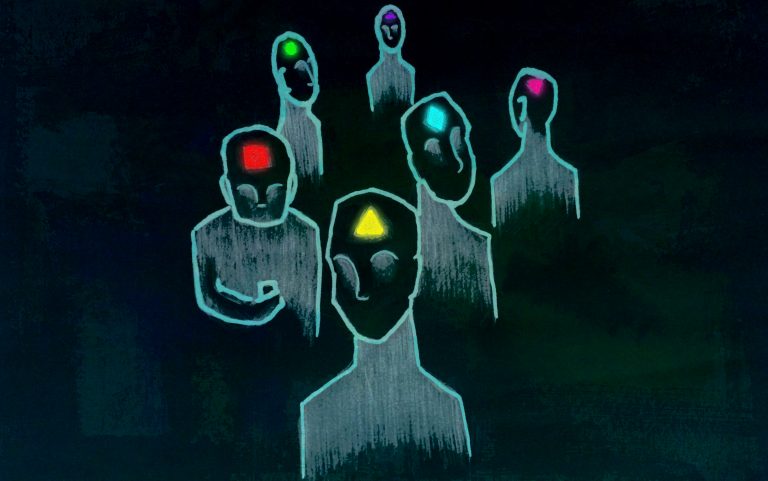I scheduled a session of Khaotic at Gothcon, but I didn’t expect a full sign-up + one. Fortunately I’d brought six characters. Having played it before with five was a handful, and six was wild: the more the merrier, as far as this particular fiction is involved, but it’s no joke maintaining the separate perceptions of everybody, including those who are interacting with the many-minded player-character(s).
The previous experience served me well. This time I fully took on the critical task of playing NPCs as fully-motivated, highly-indvidualized entities, “heroes in their own minds” if that makes any sense.
For those who haven’t learned about the game or seen previous posts about playing it a couple of years ago, it’s a remarkable science fiction game whose undeniable “that’s so Nineties” quality somehow holds strong in modern play. The player-characters are mentally beamed to another place (planet? dimension?) and end up in a single mind. The tropes people would say “hilarity ensues,” but it’s more like horror and fear with just enough humanity and black comedy to keep it going. I don’ really know how to summarize it. Fortunately the game book is available for free at the authors’ Haunted Attic website.


2 responses to “Many heads in one”
When I looked at this game, a thing I noticed was that it doesn’t confine itself to just the missions where the team possesses a single body. It assumes the team will also occasionally do missions on earth where they are fully their independent selves.
For single session games, I see why you would want to lean into the game’s more interesting mode. However, I was wondering if you see potential value in those earth missions, assuming the game were being played in a longer context?
We did that a lot in the Spelens Hus game a couple of years ago, which you can find here via the game title tag. It has properties which aren’t well-stated in the game text.
First, “missions” isn’t really the right concept. The characters are back on Earth, alone in their bodies respectively, and each one is chock-full of NPCs and agendas and troubled backgrounds. So there is a lot that they might want to do, individually, and a lot of people who are motivated to want to do something to or for them. It’s more like simply play, especially play that has a chance to get quite fraught and dangerous, depending upon who does what, and how successfully.
Second, and this is critical, the GM cannot know when the jump team will return from a Xenos mission. It might be a few minutes or it might be days. Since the government, international, and social situation of the ISES project are also pretty fraught, a lot can happen on-site while the characters are mentally elsewhere. You can see in the game we played (the older one) that at one point, they wake up and discover the Russians have taken over the jump team administration.
Putting these together: In this game, check out JC-17’s situation and how I played Danny in the opening scene. I knew that if the team were away long enough, into a shift change for the ISES staff, that Danny would carry out his plan to kidnap/rescue JC, with the help of VONU. JC would wake up very much someplace else. But if they came back quickly, then Danny would have to interact with JC about carrying it through. I didn’t know how long that would be – it wasn’t up to me! This game “leaned into” the Xenos mission, as you phrased it, only because the players kept doing things on Xenos. If they had come back quickly, perhaps most of the session would have been on Earth. (I just realized that I hadn’t included my GM notes in the post; I’ll attach them now.)
It seems to me that given all this dynamism about what can be going on,* it is a bit silly to think of the jump team being “sent on a mission” here on Earth in any way parallel to a Xenos mission. However playing on Earth seems absolutely necessary, right there at the ISES facility with whatever time lapse and active elements may already be established in play.
* And bear in mind that the same applies to Xenos.